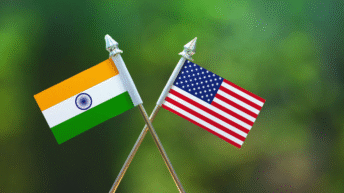By Côme Carpentier de Gourdon

Celebrating the life of Dalai Lama on his 85th Birth Day.
Keywords: Tibet | Buddhism | Dalai Lama | India | China | Maoism | Nehru | Traditions | Spirituality | Science and Dogma | Pop Culture | History
In 1956, on the occasion of the Buddha Jayanti celebration, a prayer in Tibetan was composed for the long life of the young 14th Dalai Lama, then still living in Lhasa under Chinese occupation. The wish of longevity, at least, has been fulfilled.
At eighty-five, the present embodiment of the Buddha and successor of Tsongkhapa, the Dalai Lama looks almost unchanged from the day when he entered India on March 31st, 1959 at the end of a perilous journey on horseback and riding a yak through the Eastern Himalayas. In the eyes of the world, he was a hallowed idol out of the Central Asian Middle Ages, gingerly stepping into the 20th century out of the confines of his secretive and isolated realm where only a few intrepid explorers and missionaries, Soviet komissars and Nazi envoys had hitherto visited the capital. Since 1949, the book and the film by the team of American reporters Lowell Thomas and his son (who were among the last Westerners to reach Lhasa before the Chinese invasion and occupation) had propagated the legend of the Roof of the World and its teen-aged God King in the last year of Tibet’s de facto sovereignty.
Sixty-one years later the Tibetan monk, self-exiled from his exotic abode is an icon of the new millennium’s early decades, and continues to be feted by film stars, religious dignitaries and statesmen and even sought by quantum physicists, epigenetic biologists and gestalt psychologists. Yet, he has kept the ageless gentle impassivity personified by the Buddha and when in his presence, one acutely feels he has explored this world while remaining above it, he has plumbed the ocean of modern reality but remained on its astral shore with the grave and benevolent composure of contemplative figures.
There is hardly any other case of a venerated religious dignitary becoming almost a pop celebrity without losing his mystical prestige. Tenzin Gyatso has achieved this feat effortlessly with his natural gift of treating the President of a superpower as he would a humble devotee.
While conciliatory towards China he has tirelessly championed his people’s cause, exposed its plight, and preserved its heritage with unsurpassable effectiveness. Coming before him one immediately realises that he has nothing to prove but his almost childlike eagerness only adds to the majestic mystery that hallows him. He readily acknowledges the flaws of the Tibetan traditional, political, and social order and grants merit to the Communist ideal and to the material achievements of the Chinese People’s Republic. He evinces a detached and candid humour when evoking some of the occultist writers prone to spin fantastic tales about the supernatural powers of lamas and hidden treasures of the land of yaks and yetis.


I first met him in my early teenage years, in the seventies and experienced the utter spontaneity of his demeanour. The way he spoke of the Maoist invasion without any animosity or resentment was in itself a lesson in compassionate equanimity. Many years later, in 2016 when he hosted a small group of us, scientists and philosophers, at Thekchen Choeling, his Dharamshala abode, to reflect on some of the latest breakthroughs in mathematics, physics, biology, electronics and cybernetics, we all had a vivid demonstration of his utter lack of dogmatism. He is always willing to reconsider and possibly discard any aspect of the doctrine enshrined in the encyclopedic literature of Mahayana Buddhism in the light of scientific findings, but he is careful not to accept uncritically theories derived from innately subjective interpretations of the experimental method. He has been in touch with scientists for too long not to realize the constant evolution of knowledge and the rapid changes in the description of facts, inscrutable and indeterminate by themselves. When life scientists claim that infra-animal forms of existence such as plants are endowed with perception but not with consciousness, he smilingly points out that Buddhist psychology attributes sentience to all living beings and that consciousness is perhaps only a higher degree of the perceptive ability when it reaches the power to perceive its own source.
In the 1940s, the Austrian geographer and mountaineer Heinrich Harrer (the central character of the film Seven Years in Tibet) had travelled for two years on foot after fleeing an internment camp in Dehra Dun, India and after reaching Tibet, he had been employed for five years by the government in Lhasa where he became a teacher and a friend to Tenzin Gyatso, the Dalai Lama. He had come to India in 1950 when the PLA occupied Tibet and in 1951, Harrer gave a written account of his impressions and opinions about the Abode of Snows and its then adolescent supreme pontiff to the illustrious Indologist Dr Raghu Vira.
Harrer described the ‘exceptional abilities and character’ of his pupil and noted that ‘he was determined to start reforms and make out an entirely new government which would have nothing to do with the feudal system’, in the teeth of predictable opposition from the domestic religious and blue-blooded oligarchy. Harrer further pointed out that the young Dalai Lama ‘expected Pandit Nehru to be his biggest supporter’ but that reports gathered from Delhi convinced the Kashag (the cabinet in Lhasa) that ‘India was opposed to His Holiness leaving Tibet…The application to the United Nations Organisation (made by the Tibetan government ) was deferred and India advised Tibet to come to terms with the Chinese….Matters went so far that a rumour spread that India might hand over the Dalai Lama to the Communists’.
However, Harrer did not put all the blame on the authorities in Delhi and felt that the Tibetans had not made their case well due to their lack of diplomatic experience and usual ‘suspiciousness’. On the other hand, Nehru was guided by his sympathy for the Marxist revolution in China and his conviction that India did not have the military means to defend Tibet against the People’s Liberation Army.
Harrer’s assessment of the situation between the Communist Leadership in China and the monastic dispensation in Tibet was echoed by the Dalai Lama in subsequent decades as he had advised Mao himself to use a soft approach vis-a-vis the traditional Buddhist hierarchy if he wished to prevent a tragedy: ‘If the Chinese would only indoctrinate communism among the border Tibetans they would have an easy victory provided they leave (sic) His Holiness in power. If China would enforce reforms with (sic) Chinese officers there will be permanent resistance’ wrote Harrer.
The Austrian traveller also predicted the likely shape of things to come noting that ‘it will not be difficult for China to infiltrate (i.e. the subcontinent) as there are innumerable passes across the Himalayas…it is wrong to think that the Himalayas are natural barriers’.
History presents us with many retrospective pictures of opportunities that were missed but time does not move in reverse. In the Potala, stands a terracotta group representing the first Dharmaraja of Tibet, alleged to be the fifth son of Raja Prasenajit of Kosala, flanked by his two wives, a Chinese Tang ‘daughter of heaven’ and a Hindu Nepali princess. The sculpture evokes the location of the Kingdom of the Snow Lion between the two giant civilisations. Almost two hundred years later at the close of the 8th century of the Common Era, another Tibetan Emperor convened and chaired the famous Samye debate between two Buddhist scholarly authorities, the Indian Kamalasila and the Chinese Hwang Chen in order to decide which version of the Abhidharma should be followed in his realm. In the end, Hwang Chen acknowledged defeat and the Nalanda tradition was adopted at the state level. Seven hundred years in the future, the Saskya patriarch was to become the spiritual mentor of the Mongol Emperor Kublai Khan in Xanadu and the latter helped spread Dharma across Siberia all the way to the Caspian Sea and the Volga.
Such is the continental saga of Tibetan Buddhism. The Dalai Lama embodies the epilogue of glorious annals of peaceful conquest in Cakya Muni’s message illustrated by all Bodhisattwas, Tulkus and Tertons:
A star at dawn, a bubble in a stream,
A flash of lightning in a summer cloud
A flickering lamp, a phantom, and a dream.
(Translated by Professor Lokesh Chandra).






Add comment